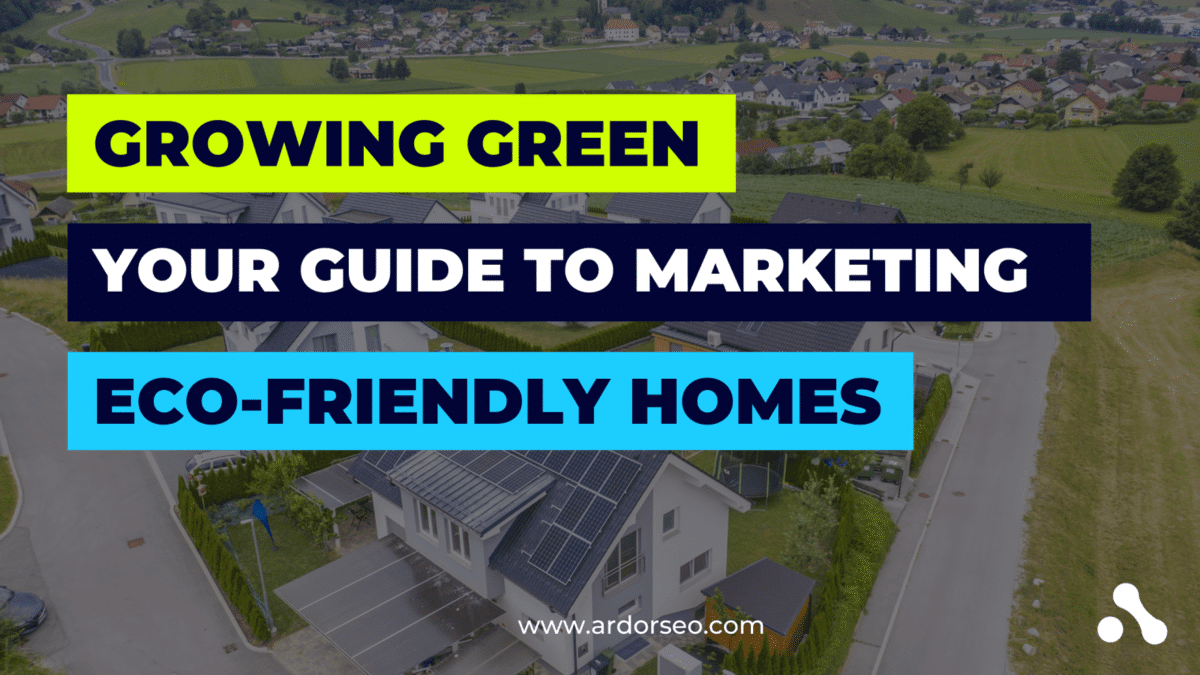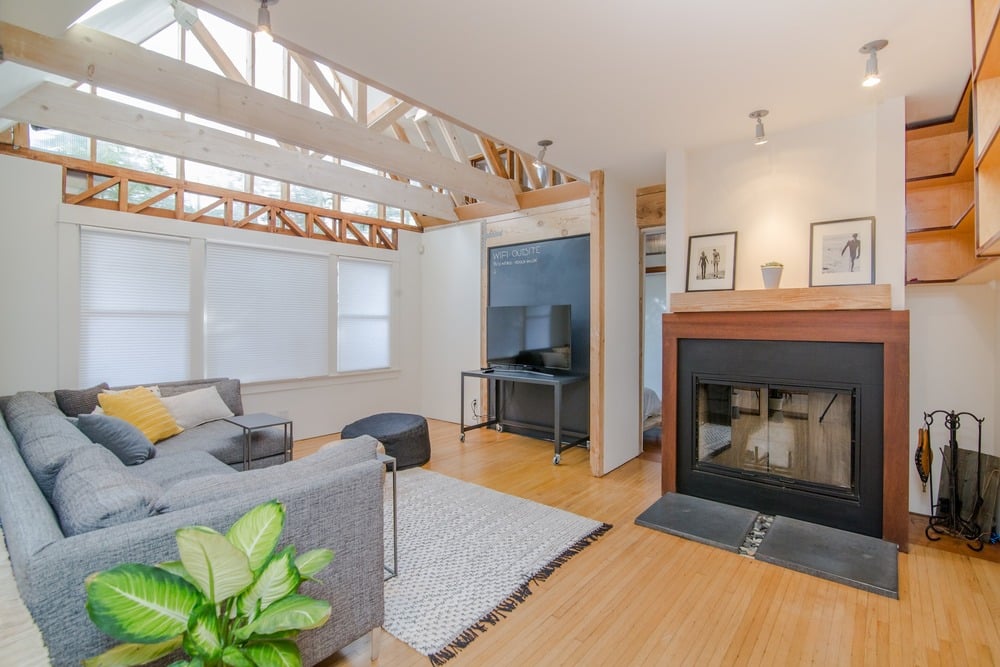
The demand for eco-friendly houses continues to rise across the US. In fact, homes rated as energy-efficient sell 2.7% more than unrated apartments. The statistics also show that 49% of Americans value eco-friendly features over luxury elements in a home.
With eco-friendly houses becoming more of a preference for home buyers, many realtors are tilting toward these properties. However, marketing eco real estate can be quite complicated compared to traditional homes.
Beyond an apartment's aesthetics and selling price, homebuyers also want to know the energy-efficient appliances that come with the property and how they'll help reduce utility bills. Whether you're a buyer or seller's agent, you must be knowledgeable and savvy enough to answer these questions.
If you're selling eco-friendly homes for the first time and having trouble marketing them, we've detailed some best practices to help you sell these properties in this article. Dive in to discover how to pull off a sustainable home sale like a top-tier agent!
Why Homeowners Want Eco-friendly Homes
Unlike luxury properties, sustainable homes aren't attractive to homebuyers because of their aesthetics. Most individuals want an eco-home to reduce energy consumption and carbon footprint.
Understanding why homebuyers want to purchase an environmentally-friendly house can help you position the properties in your listings to attract your target customers. That said, here are some of the key factors driving today's real estate investors toward sustainable properties:
1. Stable Temperature and Improved Air Quality
Eco-friendly homes typically feature building materials that guarantee natural insulation. These elements ensure that homeowners deal with less heat within the apartment during extremely hot seasons while reducing heat loss in their home during winter.
For individuals living in regions with extreme climates, opting for homes with insulating features (such as triple-glazed windows and spray foam roofing) helps improve indoor comfort, regardless of the harsh weather conditions outside.
Besides their insulating properties, eco-friendly houses also improve interior air quality, as they feature construction materials that emit fewer chemical pollutants. In other words, the probabilities of exposure to oxygen mixed with toxic gasses in an eco-house are significantly less.

2. Reduced Energy Costs
Utility bills can quickly skyrocket in a traditional apartment. The more homeowners use their home's heating, ventilation, and air conditioning unit to stabilize indoor temperatures, the higher their monthly heating and cooling costs.
However, eco-friendly homes typically require using a HVAC system less, as they feature insulating properties.
They also come with energy-saving appliances that keep energy consumption to a bare minimum. Since homebuyers use little energy in eco-homes, they'll save money on utility expenses. This factor is a crucial reason most individuals opt for eco-houses over conventional buildings.
3. Resource Conservation and Environmental Safety
Energy utilization in conventional homes often requires the consumption of fossil fuels. Not only does this deplete the Earth's natural resources, but it also increases carbon pollution across the planet.
Sustainable homes are an effective alternative to limit carbon emissions and dependence on our planet's scarce resources.
With renewable sources of energy powering a home, homeowners can reduce their carbon footprint and mitigate the effects of greenhouse gasses (carbon dioxide, methane, and nitrous oxide) on the environment.
4. Durable, Long-term Investments
Sustainable houses aren't just environmentally friendly; they're also quite durable.
Since one of the ideas behind eco-friendly houses is to reduce the waste of resources, they're typically built with high-quality natural materials that ensure they won't require frequent renovations that demand purchasing additional building equipment.
Several of these properties also involve a building process significantly cheaper than traditional properties. So those who invest in eco-friendly properties are basically saving money on initial construction and future maintenance by opting for a sustainable home.
Furthermore, with the increased demand for energy-efficient housing, purchasing an eco-friendly house is a long-term Investment. If the owner eventually decides to sell the property, they'll likely sell it for higher than the initial purchase price.
Best Practices to Market Eco-friendly Homes
Selling energy-efficient housing can be challenging if you're new to these properties. However, you can get significantly better sales results by leveraging some marketing best practices.
Here's how to convince your customers to opt for residential property that offers environmental sustainability and energy efficiency:
1. Emphasize the Environmental Impact of Eco-friendly Homes
Purchasing a home for most individuals is more than making deposits for a living space. Many homebuyers have sentimental connections to their houses. As such, they often make purchase decisions for emotional reasons.
For instance, your customers may be more willing to pay for a property if they know it'll contribute positively to the environment. One way to convince them about this fact is to focus on the harmful effects of conventional housing compared to the environmental impact of eco-friendly homes.
You'd need to arm yourself with the necessary data to do this. Homebuyers will only likely trust you if you show them you have an in-depth understanding of what you're selling.
For instance, you could highlight the fact that buildings in the US are responsible for 40% of carbon emissions and 14% of portable water consumption. In contrast, sustainable homes have zero carbon footprint and help conserve already-scarce resources.
As such, they should be a preference for anyone seeking to protect the planet.

2. Highlight Energy Savings
Zero carbon emissions and resource preservation aren't the only reasons to opt for an eco-friendly house.
Energy efficiency and the resulting reduced energy costs are another attraction to sell to your clients. Statistics show that the average US residential utility customer consumes over 10,000 kilowatts annually. Based on current electricity prices/kilowatt in the US, that's around $1,500 yearly.
That's not all. Studies also show that US residencies account for 21% of the country's energy consumption.
Unsurprisingly, most of this energy was used on heating and cooling systems. Even more concerning is the fact that 48% of the energy used to power American homes come from natural gas.
In a nutshell, American homes are paying thousands of dollars to consume astronomical amounts of energy while also depleting natural resources.
However, energy conservation and reduced utility spending is a significant advantage of an eco-friendly house. Eco-friendly real estate properties typically feature high-performance insulation materials that reduce the dependence on an HVAC system.
Several of them also come with renewable energy sources, such as wind and solar power, ensuring homebuyers don't contribute to the depletion of the Earth's natural gas.
By highlighting the cost-saving benefits of an eco-friendly home to a client, you're more likely to convince them that the property is ideal for them.
3. Showcase Other Financial Benefits
Besides lower energy bills, sustainable homes feature other financial perks you can sell to your clients. For instance, eco-friendly properties like prefabricated homes typically feature lower construction costs than conventional buildings.
In other words, if homebuyers don't have the funds to invest in traditional real estate, they can opt for prefab homes as cheaper alternatives. Also, an eco-friendly sustainable house often comes with reduced maintenance costs.
Since it's built with long-lasting materials, landlords won't require many repairs throughout the property's lifespan.
In contrast, conversational houses often require significant maintenance that gulps thousands of dollars as the property ages. With an eco-friendly house, your clients will save money on these structural repairs.
Alongside the reduced maintenance fees, energy-efficient houses boost higher resale values. The demand for these properties continues to increase across America, especially with the harmful effects of climate change.
As such, homeowners with eco-friendly homes can sell the properties higher than they purchased them by cashing in on the houses.

4. Leverage Varying Marketing Channels to Reach a Diverse Audience
Eco-friendly residential properties are popular across a wide range of demographics. These audiences constitute several age groups, from Generation X to millennials.
As you already know, customers from these age grades are familiar with different marketing channels. As such, it's best to sell your properties across diverse platforms to reach different audiences. For example, you could use newspaper and magazine ads to sell to older investors.
However, social media and your company website are ideal channels to reach millennials looking to purchase an eco-friendly home.
That said, the online space can be competitive. As such, you want to go the extra mile to ensure your marketing strategy puts your company in front of your millennial audience. Getting your SEO efforts right is particularly essential in this regard.
Of course, SEO for real estate agencies can be quite complex, especially if you're unfamiliar with the best practices. For desired results, it's best to hire a real estate SEO agency to optimize your firm's website to rank high on SERPs and reach your desired audience.
Ardor SEO is a real estate SEO firm with in-depth experience and expertise in helping property investment brands reach the top of search engine rankings to attract their target market. We're the top brand to opt for if you're considering marketing your firm's environmentally-friendly housing alternatives via online channels.
Conclusion
Eco-friendly sustainable homes are currently the rave of the housing market. However, despite the increased demand, most realtors new to the eco-housing market may still struggle to market these homes to their customers.
A crucial technique that could significantly improve your marketing efforts is to focus on the cost-saving and environmentally-friendly features of these properties.
A customer is more likely to purchase an eco green home if they're aware the property will save them thousands of dollars in energy bills and also reduce their carbon footprint.
Marketing an eco-friendly house can be complicated if you're unfamiliar with the market. To reach a larger audience and guarantee better results, realtors typically leverage online marketing channels.
However, without the right SEO efforts, your digital marketing methods will fail to yield returns. By investing in in-depth real estate SEO, you're more likely to attract more buyers and convert leads to paying customers.
FAQs
Tiny homes, prefabricated properties, and passive homes are typical examples of eco real estate.
You can make your home eco-friendly by investing in rooftop solar panels to conserve scarce natural gas and using recycled materials to reduce material waste and greenhouse gas emissions. You can also opt for energy-saving home appliances to reduce your energy utilization.

